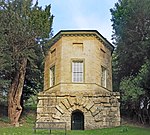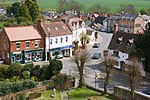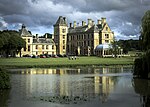Compton Verney House
Country houses in WarwickshireGardens in WarwickshireGrade I listed buildings in WarwickshireMuseums in WarwickshireUse British English from August 2022 ... and 1 more
Verney family

Compton Verney House (grid reference SP312529) is an 18th-century country mansion at Compton Verney near Kineton in Warwickshire, England. It is located on the west side of a lake north of the B4086 about 12 miles (19 km) north-west of Banbury. Today, it is the site of the Compton Verney Art Gallery.
Excerpt from the Wikipedia article Compton Verney House (License: CC BY-SA 3.0, Authors, Images).Compton Verney House
The Old Walled Garden, Stratford-on-Avon
Geographical coordinates (GPS) Address Nearby Places Show on map
Geographical coordinates (GPS)
| Latitude | Longitude |
|---|---|
| N 52.17348 ° | E -1.54519 ° |
Address
Untitled Boulder
The Old Walled Garden
CV35 9HJ Stratford-on-Avon
England, United Kingdom
Open on Google Maps







